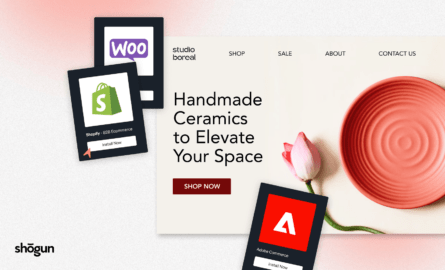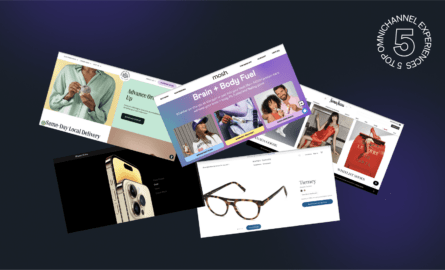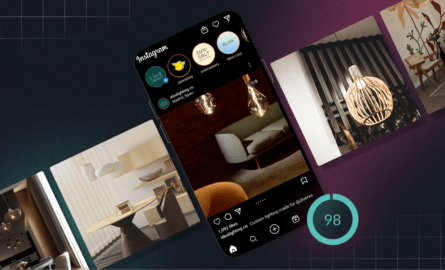The Rise of Augmented Reality in Ecommerce—Plus 3 Tips to Apply it in Your Store
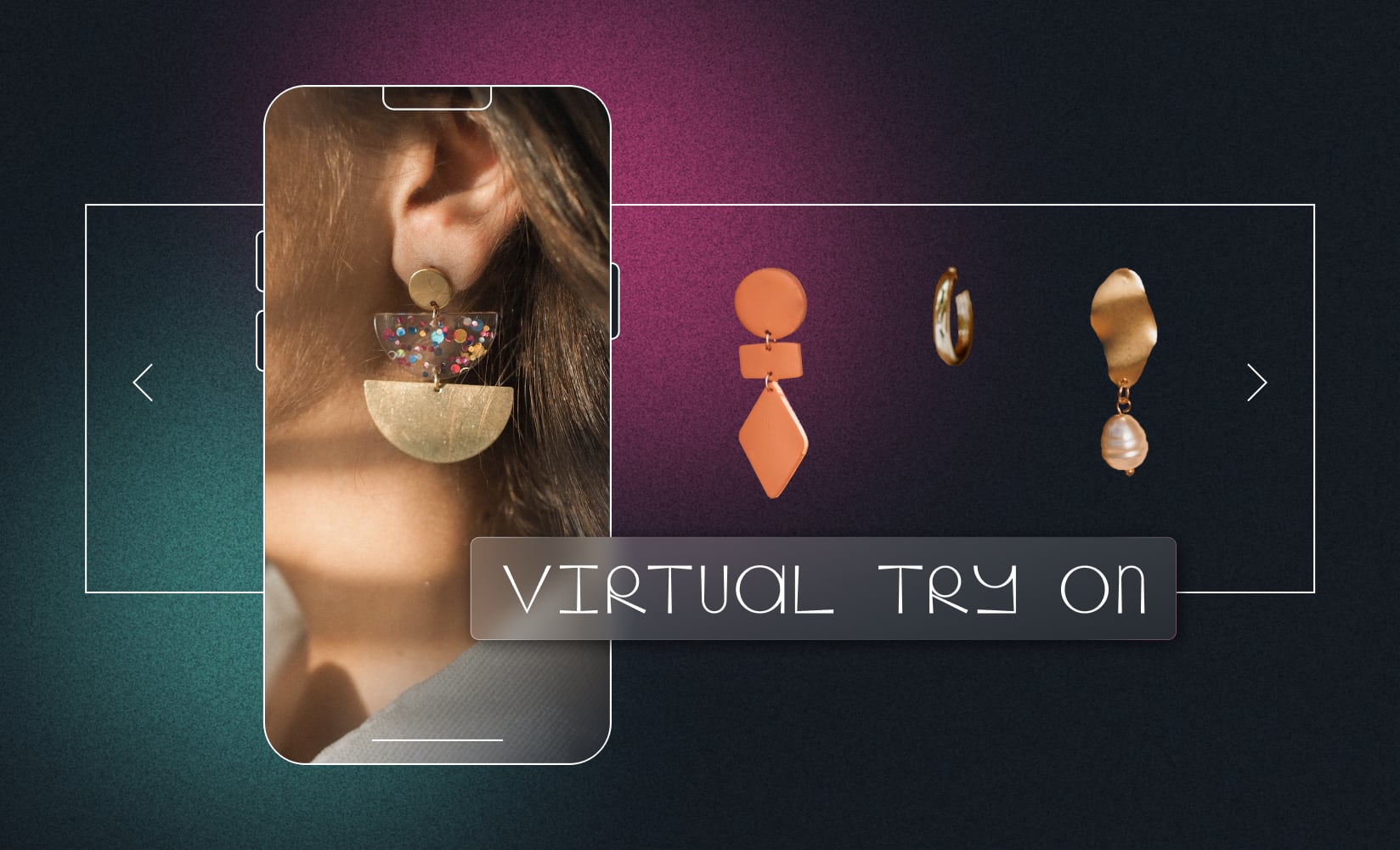
As ecommerce evolves, so too does the way people shop.
Augmented reality is one of the very latest technologies to apply within your online store’s experience, and it’s already changing the way shoppers interact with brands on the way to a purchase.
Augmented reality (AR) is a technology that allows your online store visitors to view digital information in the real world.
Think of it as a digital overlay atop the reality we see in front of us facilitated through a variety of devices like smartphones, tablets, and even glasses.
There are already a number of well-known examples of augmented reality in action, often in applications involving video games and entertainment. But AR has other, more practical ecommerce applications too.
If you’re a director of ecommerce at a multi-channel brand, it may be daunting to figure out how to apply augmented reality to your storefront.
In fact, just 9% of senior retail executives report feeling able to support advanced tech like AI, chatbots, and augmented reality, while 52% admitted they feel unprepared.
But don’t worry, we’re here to help!
Below we’ll give you the 411 on all things augmented reality in ecommerce, plus three tips on how you can start using AR in your own online store in a practical way today.
Table of Contents
But, first things first….
What is augmented reality, exactly?
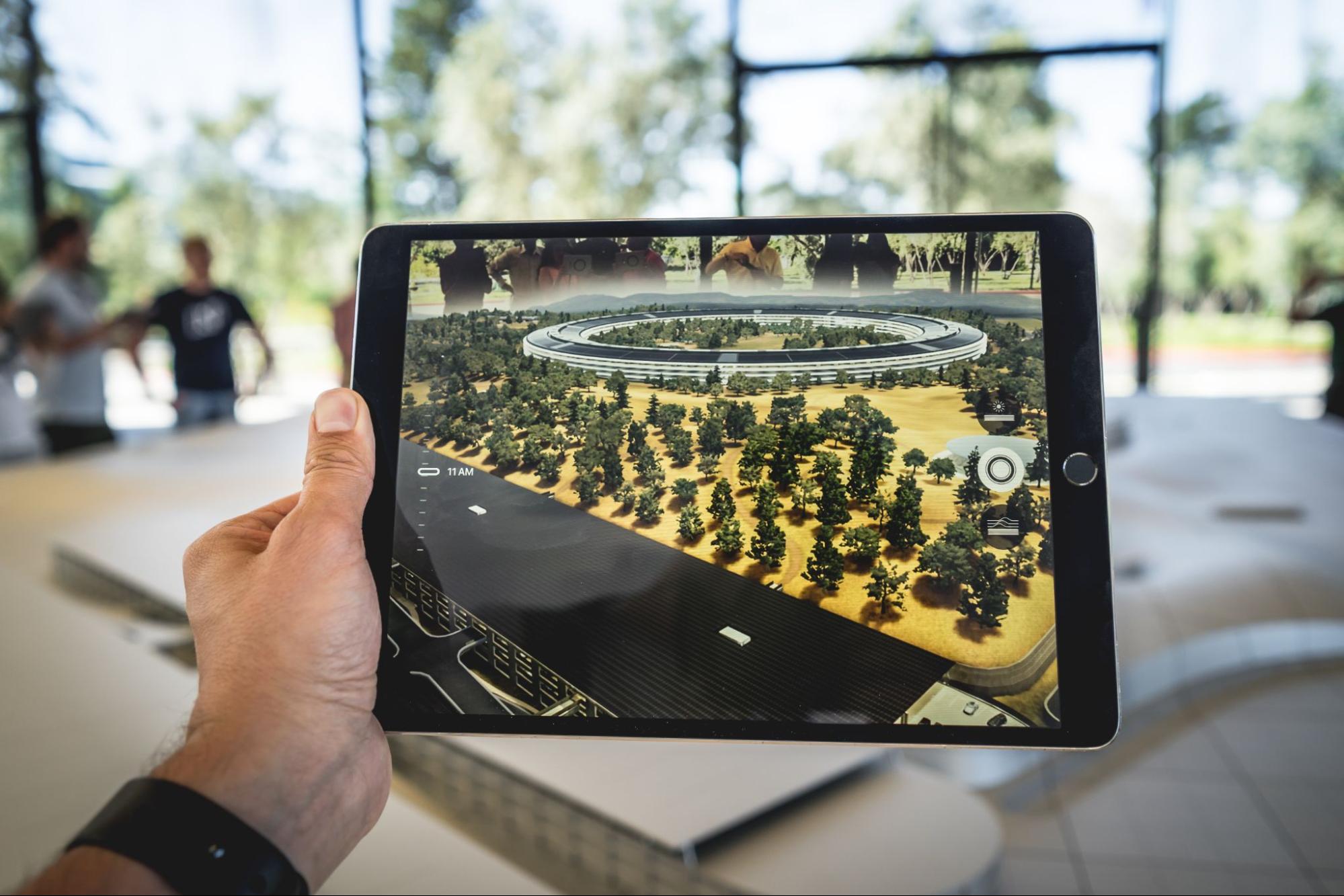
As mentioned, augmented reality is a technology that allows your site visitors or ecommerce mobile app users to view digital information in the real world.
This is done by overlaying digital images and data on top of the real world around someone through a device’s camera.
For example, the footwear brand Nike teamed up with SmartPixels and used AR technology to allow customers to sample three of the brand’s most popular shoes (AirMax, LunarEpic Low, and Cortez) in a wide range of colors.
Shoppers could place a white sneaker on a table and browse through the different color options via a hologram projection.
This created a heightened sense of fun when shopping for shoes.
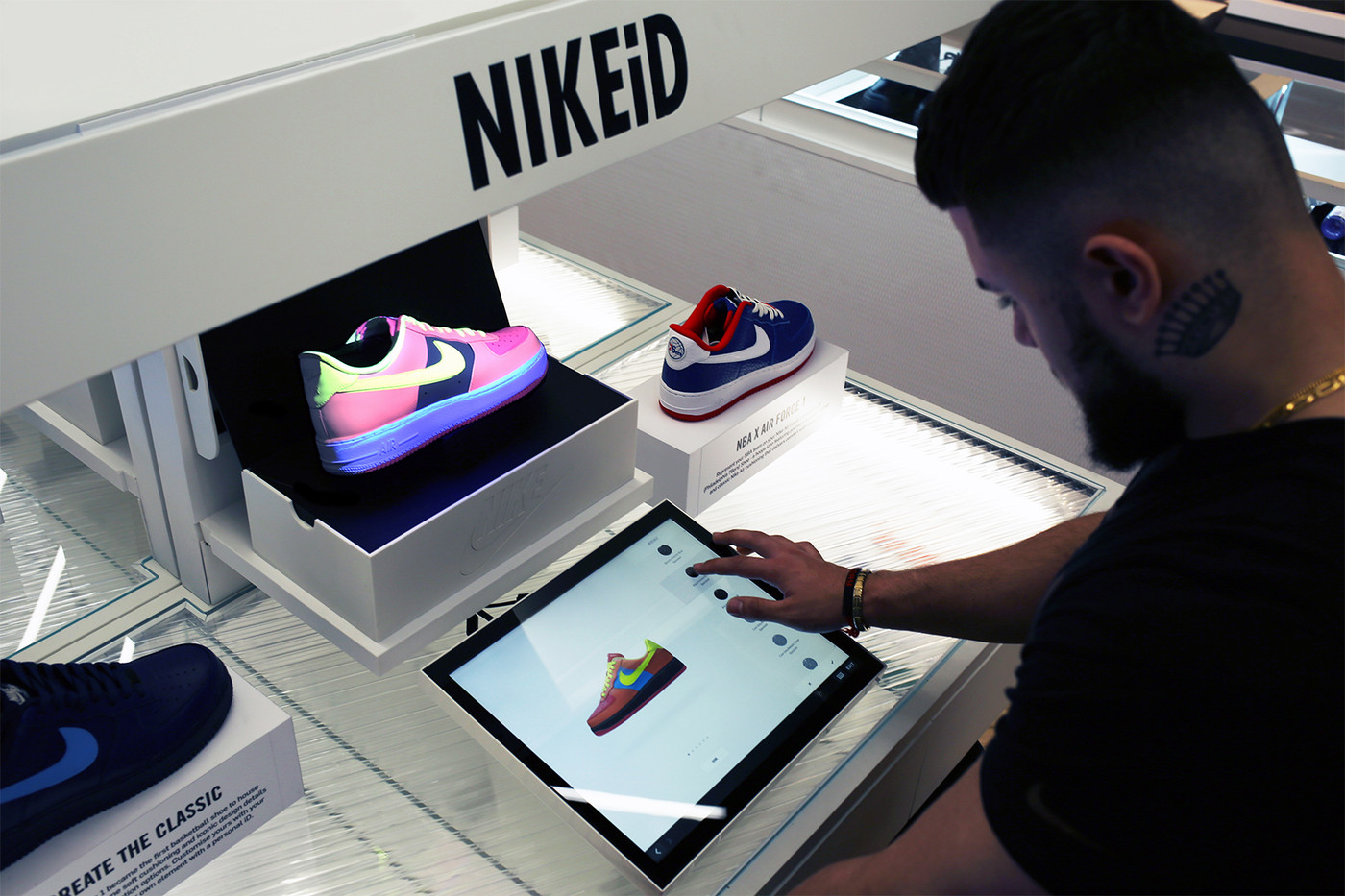
#cta-paragraph-pb#Wait, is AR the same thing as virtual reality? Not quite! Whereas AR adds digital elements to the real world—essentially allowing you to see both the digital content and the real world at the same time. VR is separate from the real world, in fact it shuts you off from it, replacing it with an artificial environment. If a VR experience takes place via a headset, then yes, that’s virtual reality. But if it’s on your smartphone or tablet, you’re looking at augmented reality!
#cta-visual-pb#<cta-title>Generate content for your store<cta-title>Produce engaging content with Shogun AI Text so you can launch pages in a flash.Start generating for free
The role of augmented reality in ecommerce
There’s no doubt that ecommerce’s augmented reality applications have the potential to change the way shoppers interact with your products, discover new collections, and have their questions addressed on the way to a purchase decision.
AR can feel very futuristic to merchants now, but just as voice search seemed this way fewer than five years ago, there are already applications in play that make it easy to understand how AR is influencing ecommerce web teams today.
Here are a few ways that AR can be used in ecommerce:
- You can allow shoppers to try on products virtually before purchase: A great example of this is Brilliant Earth’s virtual try-on app that allows shoppers to try on engagement rings before they buy. As engagement rings are a high-value purchase, customers are keen to ‘see’ what it looks like before this high-commitment buy.

- Help shoppers visualize products in their homes: AR can also be used to help shoppers visualize how a piece of furniture might look in their home ahead of checking out. This to ensure measurements and specs fit the desired space and to reduce the need for product returns. This is done successfully on Target.com, for example—you can “see it in your space” for various furniture options. In a similar example, Dulux has a ‘Visualizer app’ that allows shoppers to see what different colored paints would look like on their walls at home.
- Allow your ecommerce team to make better, informed decisions: AR has the potential to give ecommerce brands a much more direct and sophisticated way of understanding customer behavior. By analyzing data from AR sources, including traffic patterns, selections within an AR application, and purchasing trends after interacting with AR features, businesses can make more informed decisions about product development, supply chain processes, marketing strategies, and more.
These are just a few examples of how AR can be used in ecommerce contexts. As an emerging technology, you can be sure there are additional ways to bring these types of interactions to your store.
Which leads us to…
The benefits of adding AR interactions in your online store
When weighing up trendy interactions like AR for your Shopify or BigCommerce stores, you might immediately start to consider the performance and speed tradeoffs that often come with such creative storefront design.
However, many brands are finding clever ways around the traditional compromises or tradeoffs associated with fancy interactions.
And there are clear benefits to adding these types of try-before-you-buy interactions. Augmented reality in ecommerce helps your store:

Increase customer engagement and purchase confidence
Studies have shown that the average shopping cart abandonment rate is around 69.8%.
This means that nearly seven out of 10 people who add items to their shopping cart end up not completing the purchase.
There are a number of different reasons why this happens, but one of the main reasons is that shoppers don’t have a clear enough idea of what they’re buying.
With ecommerce purchases, customers can’t touch or feel the product, so they can’t be sure if it’s exactly what they want.
This is where augmented reality comes in.
By using AR, you can give shoppers a clearer idea of what they’re buying and increase confidence from the start. This will help to reduce the shopping cart abandonment rate and increase sales.
The more confidence your AR interaction can infuse to reduce friction, the better!
Increase dwell time and upsell/cross-sell opportunities
The average person spends around 4.8 hours browsing on their mobile devices daily.
By using AR, you can increase the amount of time that shoppers spend browsing (signaling to Google that you’re providing an exceptional customer experience).
With shoppers able to try on products in your store and see them in their homes before purchase, they’ll naturally be upping their dwell time and can be retargeted later with your ads (“Hey, you tried on <specific product>…but left it in your cart, how can we help you?”).
You can also introduce opportunities within your AR experience to cross-sell and upsell based on items that are being tried on or viewed with the technology.
Achieve higher conversion rates
As AR is still a fairly new technology, there’s still not a lot out there on exactly how it converts.
However, recent research supports that brands who implement AR into their strategy are definitely seeing some great marketing results when it comes to conversion.
For example, according to threekit:
- 71% of consumers say they would shop more often if they used AR.
- 61% of consumers say they prefer retailers with AR experiences.
- 20% of US companies plan to incorporate AR or VR into their online stores, as opposed to 8% from six months earlier.
- 100 Million customers used AR or VR for shopping in 2020.
Additionally, according to Think with Google:
- Shopify found a 94% increase in conversion for products that were advertised with VR or AR technology.
- 90% of Americans either use, or would consider using AR for shopping.
- 98% of those who used AR when shopping say it was useful.
#cta-visual-pb#<cta-title>Generate copy in seconds<cta-title>Create first drafts of web copy with Shogun AI Text to supercharge your landing page creation.Start designing for free
Improve reviews and offer especially compelling shopping
By using AR, you can also improve your online reputation management efforts.
This is because shoppers who have a positive experience with AR in your store are more likely to leave positive reviews and share their experiences with others.
This is largely because AR in ecommerce is so novel and exciting. You immediately stand out for offering it as part of your experience.
As such, as an offshoot benefit of implementing AR, you’re immediately a more innovative brand.
While not a direct benefit to your store visitors, you’ll be able to position your executive or ecommerce team as thought leaders in your vertical.
3 Best practices for using augmented reality in your scaling store
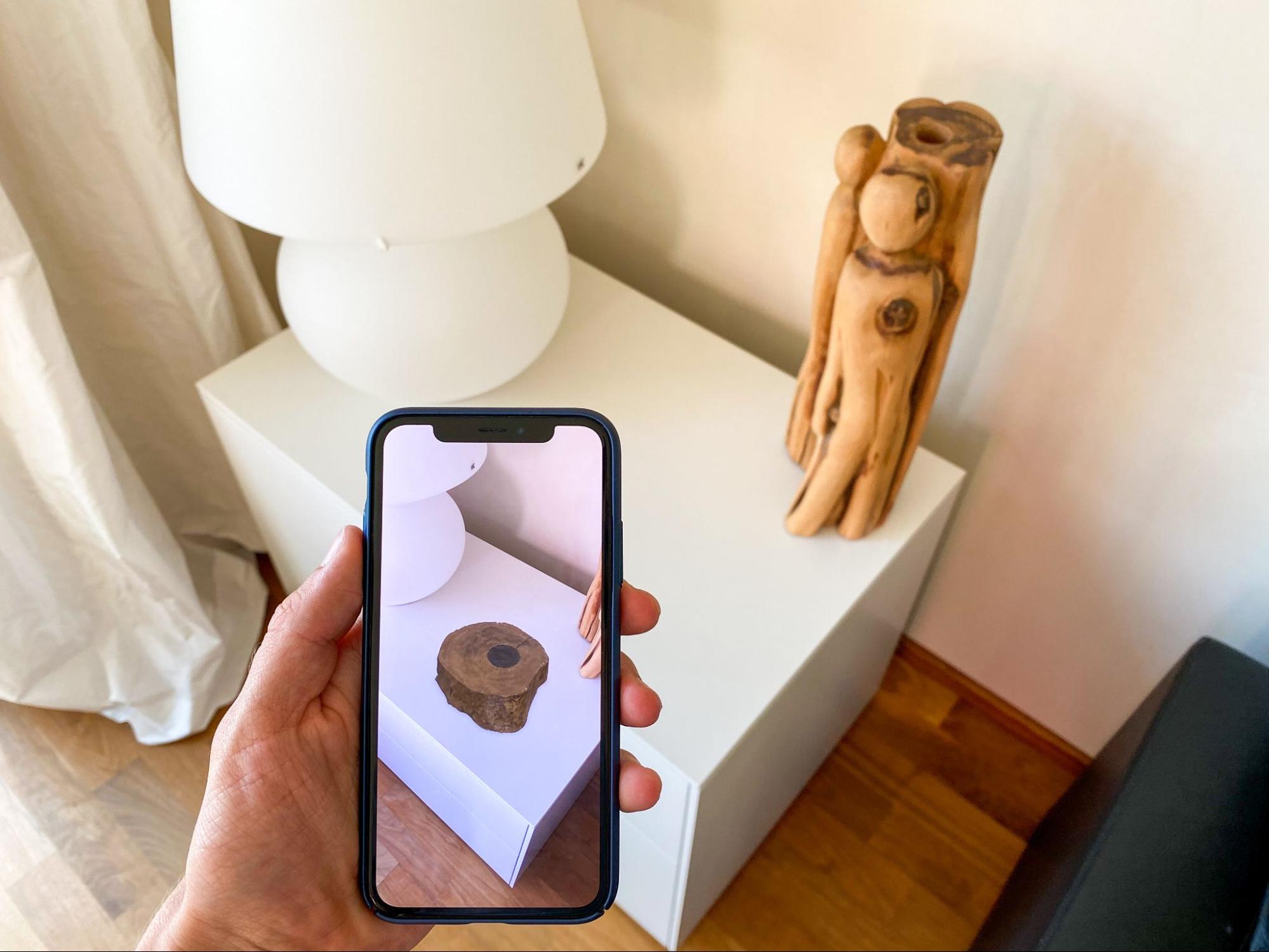
Because of its novelty and potential benefits it’s likely you may be looking for practical ways to apply augmented reality in your store. Here are three tips on how you can start using augmented reality in your ecommerce store today:
1. Have a clear idea of your business goals and objectives
Before you start using augmented reality in your ecommerce store, it’s important to know what you hope to achieve by using AR.
Are you trying to increase sales? Drive more traffic to your website? Enhance digital consumer engagement?
Once you’ve answered this question or have an objective to turn back to when the AR features are in development, you’ll have a better idea of scope and how to use augmented reality ecommerce to achieve your goals.
2. Identify the type of augmented reality you would like to feature
There are a number of different types of AR, so it’s important to identify the type that you would like to implement in your store.
- Do you want to use AR to allow shoppers to try on products virtually before they buy them? (this is marker-based AR)
- Help customers project products into their homes before they purchase them? (projection-based AR)
- Or provide an immersive and interactive shopping experience with geography involved? (location-based AR)
Your choice will really depend on your business and the product(s) you’re building into the experience.
Do some research on the different types of use cases for AR, discuss your ideas with your partner agency, and design the AR application that suits your store’s business case best.
3. Know the best audience to make aware of your augmented reality (and plan to market it!)
Effective communication in business is often the key to success in identifying your target audience and knowing the best way to reach them.
When it comes to AR and ecommerce marketing, it’s important to know your target audience of shoppers and what type of interactions will resonate with them.
- Are your shoppers early adopters who are always looking for the latest and greatest technology?
- Or are they more traditional who will need to be convinced that AR is worth their time?
You’ll often need to start marketing your newly added virtual reality features on your site and need a plan for how you’ll reach your target audience to increase awareness of the new dynamic shopping feature.
Bake this feature awareness into your plans to invest in AR for best results—your audience needs to know the features are available to them to use them for the investment to pay off.
3 Augmented reality examples being used by aspirational ecommerce brands in the wild
To leave you with some concrete examples as inspiration for your own store’s experiments with AR, here are three brands we think are doing a great job featuring augmented reality in their online store experiences:
IKEA Place
In 2017, Ikea launched an augmented reality app called Ikea Place. The app allows shoppers to see how Ikea products will look in their homes before they purchase, thanks to projection-based AR.
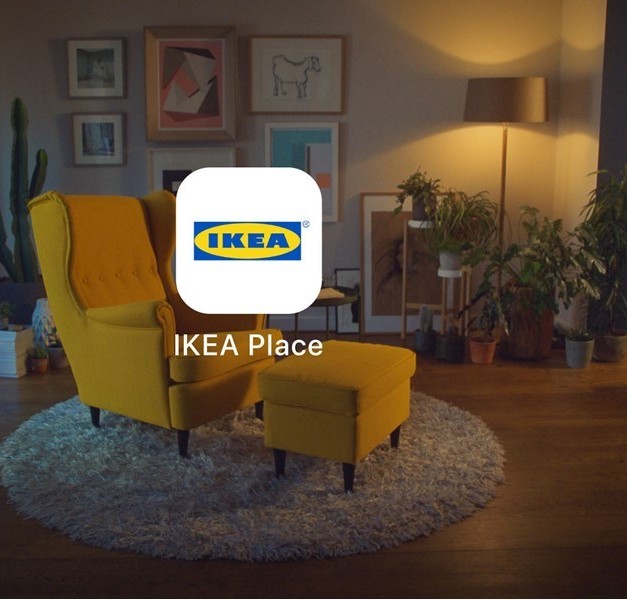
This is a great augmented reality example, and according to the company, the app has been downloaded more than 31.1 million times with an average of 4.6 stars.
Sephora Virtual Artist
In 2016, cosmetics retailer Sephora launched an augmented reality app called Sephora Virtual Artist. The app allows shoppers to virtually “try on” different makeup products before they purchase.
This augmented reality example had brilliant results with Sephora SEA driving a 28% uplift in user adoption in their AR makeup application.
With the popularity of things like Instagram filters, the beauty industry, in particular, can really benefit from AR applications like this one.
ASOS Virtual Catwalk
Leading fashion online retailer ASOS joined forces with HoloMe to launch the ASOS Virtual Catwalk app.
This AR-powered application allows its customers to search for the clothing they like, point their smartphone camera at a flat surface, and see how the clothes would look.
The feature is available on the ASOS app:
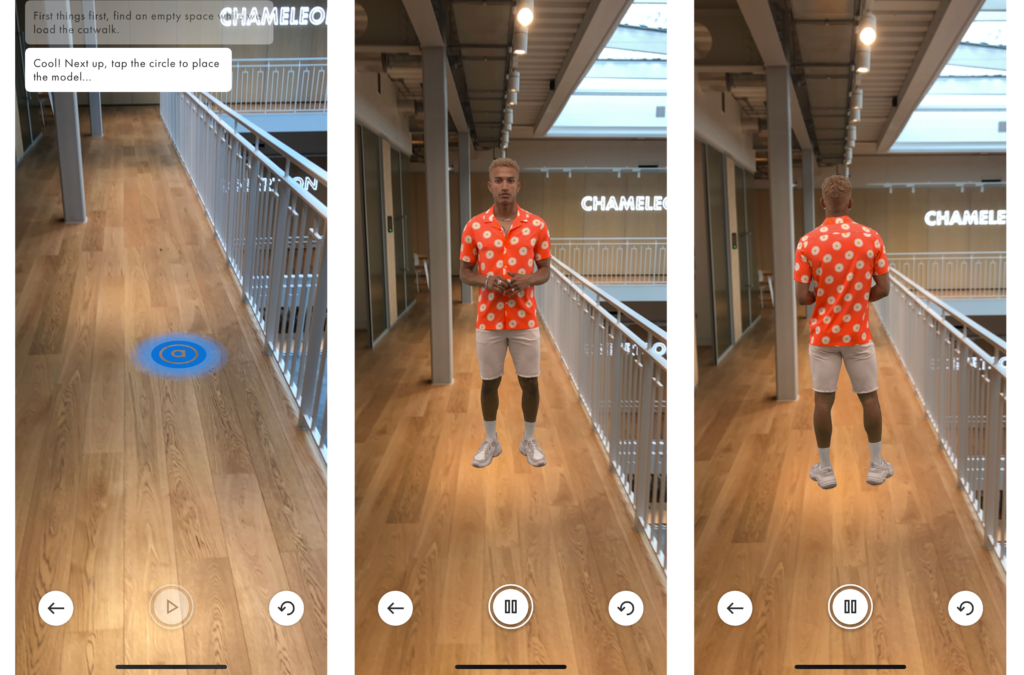
Ready to add AR to your store?
So there you have it. These are just a few augmented reality examples to highlight how AR is being used by aspirational ecommerce brands.
What do you think? Are you ready to jump on the augmented reality bandwagon?
Remember, if you’re not yet sure how to get started, it might be a great first step to inspect the flexibility of your online store for these types of interactions generally.
If content management of your store and its day-to-day flexibility could be improved, start there first, and layer AR capabilities on after that.
#cta-visual-pb#<cta-title>Make your store stand out<cta-title>Take your store pages to the next level with stunning visuals from Shogun Page Builder.Start designing for free


